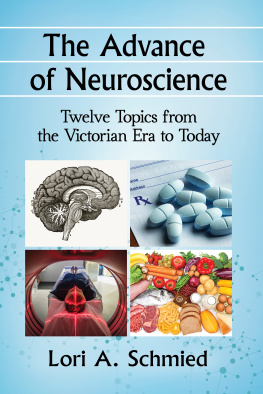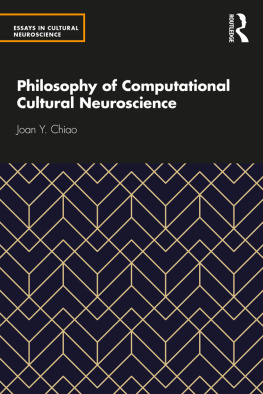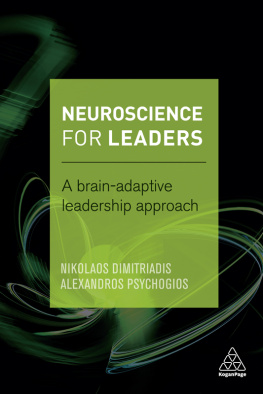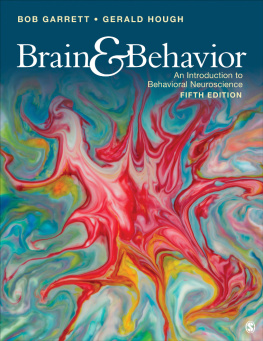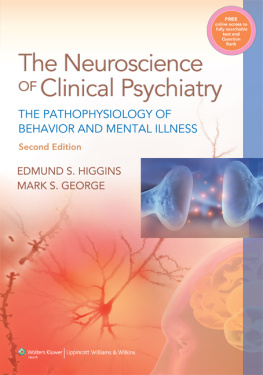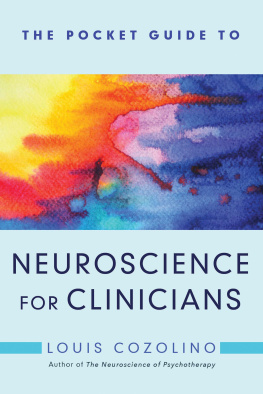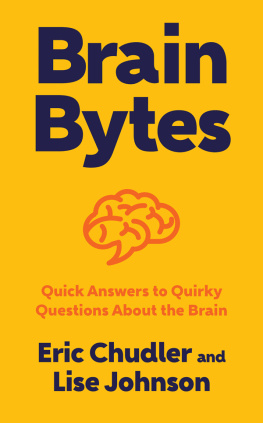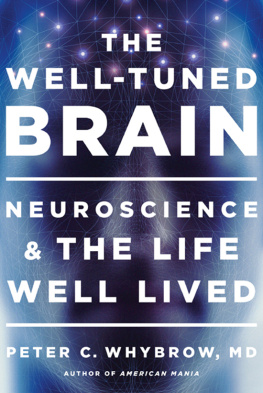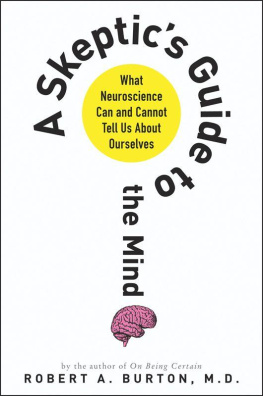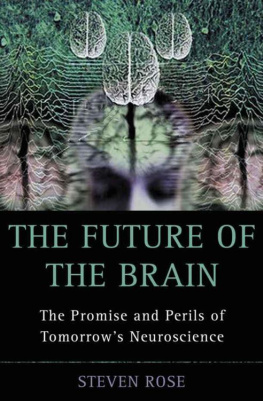
The Advance of Neuroscience
Twelve Topics from the Victorian Era to Today
Lori A. Schmied

McFarland & Company, Inc., Publishers
Jefferson, North Carolina
LIBRARY OF CONGRESS CATALOGUING DATA ARE AVAILABLE
BRITISH LIBRARY CATALOGUING DATA ARE AVAILABLE
e-ISBN:978-1-4766-3397-8
2019 Lori A. Schmied. All rights reserved
No part of this book may be reproduced or transmitted in any form or by any means, electronic or mechanical, including photocopying or recording, or by any information storage and retrieval system, without permission in writing from the publisher.
Front cover images 2019 iStock
McFarland & Company, Inc., Publishers
Box 611, Jefferson, North Carolina 28640
www.mcfarlandpub.com
To my parents, Ron and Joan,
who introduced me to
the world of books and learning
Acknowledgments
Many individuals have helped me to bring this work to fruition and deserve my gratitude. I am especially grateful to my friends and colleagues in psychology at Maryville College for the support they have given me not just for this project but throughout my academic career. I have learned much about the field of psychology from them and they have helped me become a better teacher. The friendship and support of my chair, Kathie Shiba, has been particularly invaluable in completing this project. My colleagues at the Lamar Memorial Library at Maryville fulfilled countless interlibrary loan requests and helped track down sources.
I would also like to thank the staff at the Wellcome Library in London for their assistance. I have spent many hours during the summer months over the last decade combing through resources at this library dedicated to the history of medicine. Its vast holdings enabled me to conduct most of my research under one roof and its digital holdings allowed access when I was at home.
The annual meetings of the Southern Society for Philosophy and Psychology were a means to develop many of the topics that make up some of the chapters in this book. Many, if not most, of the chapters were initially presented in abbreviated form to members of that society and their feedback was most helpful. They were also supportive of my efforts as a newbie to the history of psychology and helped give me confidence that I could pursue a project of this scale.
My psychology and neuroscience students past and present at Maryville also deserve my thanks. My first time teaching History and Systems of Psychology was transformative in sparking my interest in the history of psychology and providing a new direction of research. I continue to be inspired by my students and challenged to think more deeply on the changing field of neuroscience. Special thanks go to my former student Katherine McNeely White, who is now a graduate student in cognitive neuroscience, for her assistance in locating contemporary sources.
Our trips to London for research over the years were made possible in part because of our friendship with Camilla Bosanquet and her family, who first opened their home to our family 35 years ago when we came for a sabbatical year for my husband. Without periodic support by the Maryville College Faculty Development Committee to fund summer research trips to the Wellcome Library, this project would have stalled long ago. My early mentors, Kathleen Lawler, Hannah Steinberg, and Jerry Waters, each in their own way taught me to value the history of psychology and to search for connections at the intersections of disciplines.
Finally, my deepest gratitude goes to my husband and daughter, Karl and Katie, who have been my biggest cheerleaders throughout this process. Their support has been unflagging, giving me encouragement at the slightest hint of faltering. Karl has been my sounding board and advisor whenever I needed a boost or an idea to break through a research dead-end. No task has been too small or too big to offer help. Their love and support have made me a better person.
Preface
On any given day, you can be sure to find at least one popular media headline about some topic related to neuroscience. Just today, I have found articles in major newspapers on dementia, Alzheimers, the opiate addiction crisis, and the increase in prescription drugs to treat ADHD. The public has a fascination with brain science, and rightly sothe advances in our knowledge of the inner workings of the brain have been substantial in the last 20 years, surpassing the accumulated knowledge of the last several centuries! One only has to use the prefix neuro- and add a picture of a brain image to have the news media and publics attention. The appetite for brain news is voraciousthe public, it seems, cannot get enough of brain matter. The same can be said for academia. New areas of study, all with neuro prefixes, abound: neuroeconomics, neuroaesthetics, neurohistory, neuroforensics. We are even now in the midst of an immensely ambitious ten-year federal initiative created by President Barack Obama to map the brain. A few commentators have referred to these developments as the neuro-turn, and everywhere one looks, it is now with a neuromolecular gaze.
Some discoveries mean discarding old theories while others resurrect ones long forgotten. A look at the history of neuroscience reveals common themes, perennial debates, and a continuing quest to understand the relationship of body and mind. This book explores some of those themes and shows how history can bring contemporary issues into sharper relief. Neuroscience is a field rife with potential for both elucidation and exploitation. Instead of uncritical acceptance of new findings and applications, a look into the history of neuroscience can help one to sort through the bewildering array of issues.
The advances in science and technology have been so substantial over the last few decades that there is a tendency to view the present day as the natural culmination of steps in a journey to some predetermined final destination. This nave view ignores the history of scientific thought and the many false starts and dead-ends. The field of neuroscience may be an especially good example. The last two decades have seen an explosion in our knowledge of brain function using a variety of scientific disciplines.
I felt compelled to take on this work not just because of my professional research in the history of neuroscience issues, particularly psychopharmacology, but from my 30 years of experience teaching in the field. There is a need for educators to make neuroscience accessible to an audience that extends beyond ones colleagues in a narrow niche of academia. The very interdisciplinary nature of neuroscience lends itself to a broader audience and an historical account helps construct those disparate connections among the various fields of study that are contemporary neuroscience into a coherent package. My own background in biopsychology, psychopharmacology, and psychophysiology has enhanced my understanding of some of these connections. In my role of teacher, I am asked on a regular basis by students, colleagues, and acquaintances alike to explain a neuroscience concept or comment on some development or research advance reported in the news. While the media and public may crave simple answers to complex problems, that is an unrealistic expectation in neuroscience. Yet we need to be able to translate these complicated issues into comprehensible terms for non-experts. I believe that educators are uniquely positioned to convert the convoluted and sometimes opaque technical language of a complex research issue into a decipherable account that does justice to the problem at hand. The overlay of an historical account provides a thread of continuityone quickly sees that seemingly disparate issues are in fact related by similar roots in historical assumptions about the nervous system, for example. Neuro-turn aficionados from the humanities and arts may have the zealous and uncritical enthusiasms of the newly converted and sometimes overstate the promise of neuroscience, while the neuroscientists themselves sometimes lack the background to apply historical and socio-cultural context to an issue in order to understand its limitations and embedded assumptions.
Next page
